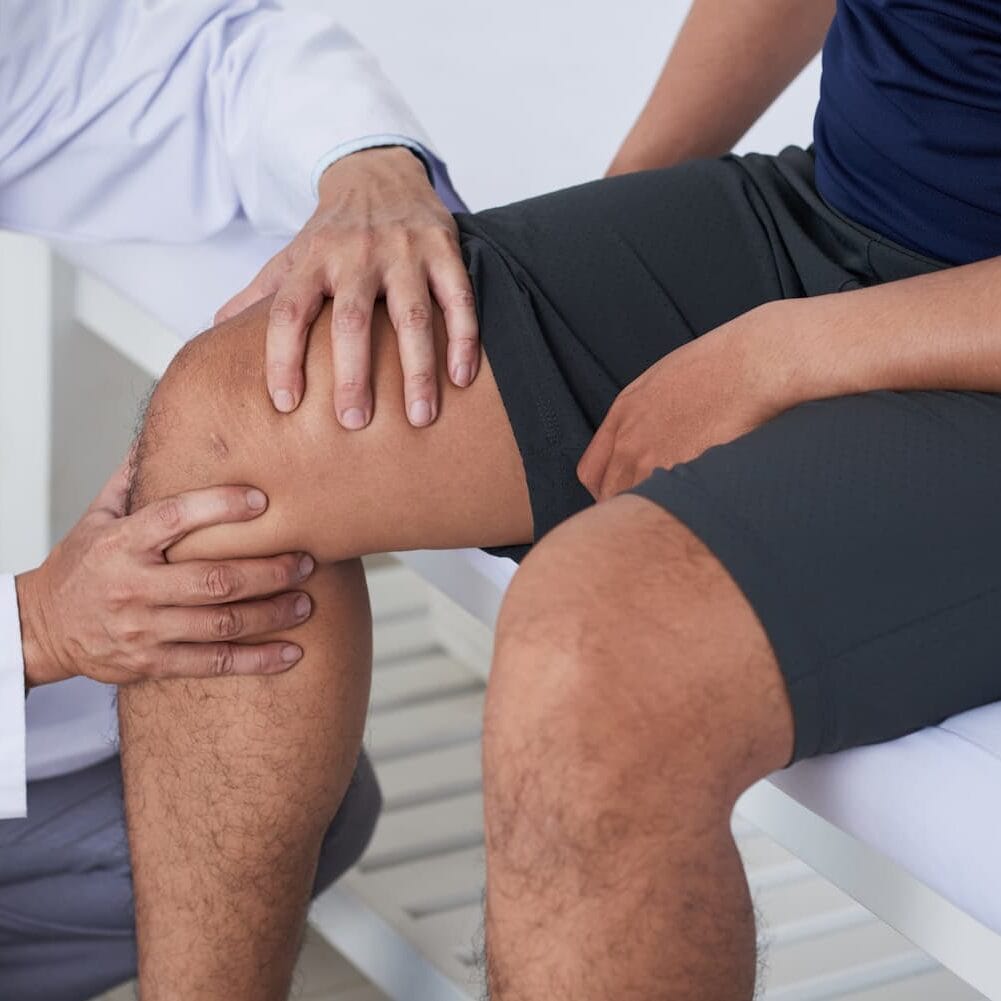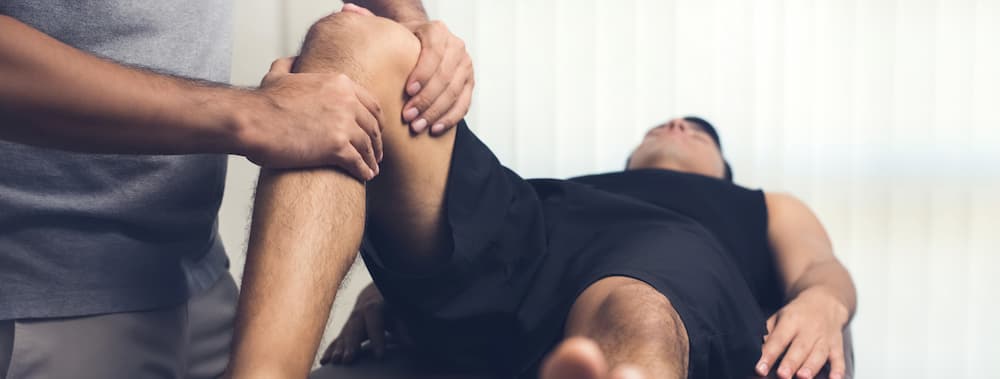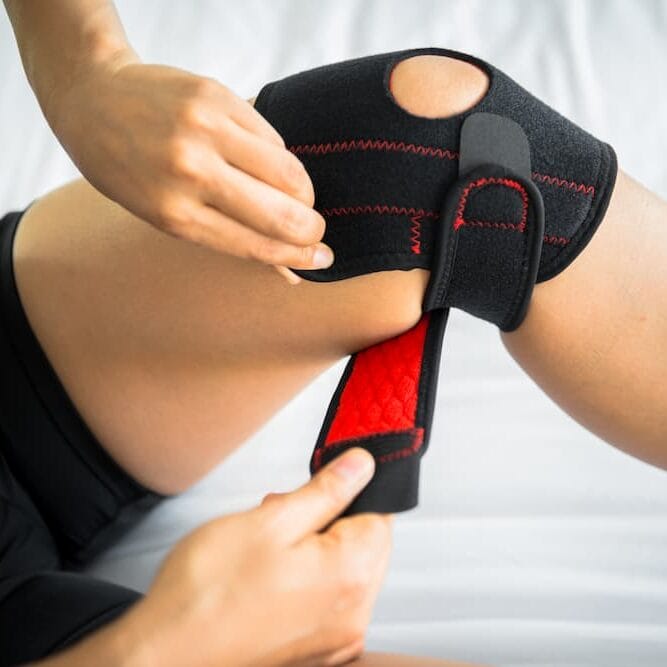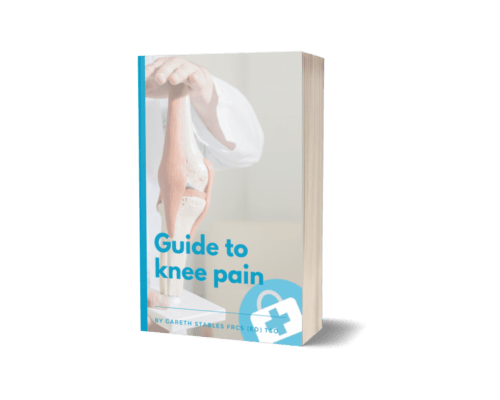Say Goodbye to Knee Pain: The Best Non-Surgical Treatments
Knee pain can be a debilitating condition that affects your daily life, making even simple tasks such as walking or climbing stairs difficult.
Many of my patients come to me having been told that surgery is their only option. Whilst this might be true for some people, there are many non-surgical treatments available that can help alleviate your knee pain and improve mobility.
In this blog post, I will explore the best non-surgical treatments for knee pain, including physical therapy, medications, injections, and more. Say goodbye to knee pain and regain your active lifestyle with these effective treatments.
Don’t Ignore Your Knee Pain
Knee pain is a common problem that affects people of all ages and can be caused by a variety of factors such as injury, overuse, and underlying conditions like arthritis. It can impact your daily activities, limit your mobility, and reduce your quality of life. If left untreated, your knee pain can worsen over time and even lead to disability. Therefore, in my opinion, it is important to seek appropriate treatment to manage your knee pain sooner rather than later, to prevent further damage to your knee joint. Fortunately, there are many non-surgical treatment options available that can help alleviate knee pain and improve your overall function.

The Right Physiotherapy Can Help
Physiotherapy is an effective and commonly used non-surgical treatment for knee pain. It involves a variety of techniques aimed at reducing pain, restoring movement and strength, and preventing further injury. A physiotherapist can work with you to develop a personalised treatment plan based on your specific needs and goals. This may include exercises to improve flexibility and strength, manual therapy to reduce pain and stiffness, and education on proper body mechanics and posture. The benefits of physiotherapy for knee pain include improved mobility, reduced pain, and decreased risk of future injury. In addition, it can help you avoid the need for more invasive treatments such as surgery and medication.
Exercises Tips for Knee Pain
- Straight Leg Raises: Lie on your back with one leg bent and the other straight. Slowly raise the straight leg off the floor and hold for a few seconds before lowering back down. Repeat with the other leg.
- Wall Slides: Stand with your back against a wall and slowly slide down until your knees are bent at a 90-degree angle. Hold for a few seconds before slowly sliding back up.
- Clamshells: Lie on your side with your knees bent and feet together. Keeping your feet together, lift the top knee up while keeping your hips stable. Hold for a few seconds before lowering back down. Repeat on the other side.
- Hamstring Curls: Stand with your feet hip-width apart and hold onto a chair or wall for balance. Slowly lift one foot towards your buttocks, bending at the knee. Hold for a few seconds before lowering back down. Repeat with the other leg.
- Quadriceps Stretch: Stand with one hand on a wall or chair for balance. Bend one knee and bring your heel towards your buttocks, holding onto your ankle or foot with the corresponding hand. Hold for a few seconds before releasing and repeating on the other side.
It is important to note that these exercises should be done under the guidance of a trained physiotherapist to ensure proper form and avoid further injury.
Steroid Injections
Corticosteroid injections are another non-surgical treatment option for knee pain. They contain a powerful anti-inflammatory medication and can provide temporary relief from pain and inflammation in the knee joint. These injections are administered directly into the knee joint by a healthcare provider. While corticosteroid injections can be effective in reducing pain and inflammation, they are not recommended for long-term use and should be used sparingly due to potential side effects. Patients should discuss the risks and benefits of corticosteroid injections with their healthcare provider before undergoing the procedure.
Hyaluronic acid injections
Hyaluronic acid injections, also known as viscosupplementation, are another non-surgical treatment option for knee pain. Hyaluronic acid is a natural substance found in the synovial fluid of the knee joint that acts as a lubricant and shock absorber. Injections of hyaluronic acid can help alleviate knee pain by supplementing the natural hyaluronic acid in the joint and improving lubrication. This can help reduce friction and pain in the knee joint. Viscosupplementation may be recommended for patients with mild to moderate knee osteoarthritis who have not responded to other non-surgical treatments. However, it is important to note that not all patients may benefit from this treatment, and it is important to discuss the potential risks and benefits with a healthcare provider.
Harness Your Own Healing Potential
Platelet-rich plasma (PRP) injections are a relatively new treatment option for knee pain. PRP is created by drawing a small amount of your blood and then using a centrifuge to separate out the platelet-rich plasma. This platelet-rich plasma is then injected into your knee joint to stimulate healing and reduce inflammation. The growth factors in the platelets can help to repair damaged tissues and reduce pain. While PRP injections are not yet widely available, research has shown promising results in reducing knee pain and improving function. It may be an effective non-surgical option for those with knee pain who have not found relief from other treatments.

What New Treatments Are There?
Arthrosamid is a relatively new treatment for knee pain that has gained attention for its promising results. The treatment involves the injection of a synthetic gel-like substance into your knee joint, which acts as a cushion and reduces pain and inflammation.
One of the main benefits of Arthrosamid treatment is that it is a non-surgical option for knee pain relief. It can be an ideal option for people who want to avoid surgery or are not good candidates for surgery due to medical reasons. Additionally, Arthrosamid treatment has a low risk of side effects and is well-tolerated by most patients.
Studies have shown that Arthrosamid treatment can provide significant pain relief and improve knee function. In one study, patients reported a 54% reduction in pain after 12 months of Arthrosamid treatment. Another study showed that patients who received Arthrosamid treatment had significant improvements in knee function and quality of life compared to those who did not receive the treatment.
Another benefit of Arthrosamid treatment is that it can provide long-lasting results. Unlike some other knee pain treatments that provide temporary relief, Arthrosamid treatment can provide pain relief for up to two years in some cases.
Overall, Arthrosamid treatment is a promising option for people with knee pain who are looking for a non-surgical solution. Its ability to provide long-lasting pain relief and improve knee function makes it a valuable addition to the range of treatments available for knee pain.

What About Knee Braces and Supports?
Knee braces are another non-surgical treatment option that can provide relief for knee pain. They are designed to support your knee joint, reduce pain, and improve stability during physical activities. Knee braces come in different types, and the type of brace recommended will depend on the severity and cause of your knee pain.
One of the benefits of knee braces is that they can provide immediate relief by reducing pressure on your knee joint. They can also help prevent further damage to your knee and facilitate healing by limiting movement in the affected area. Knee braces are particularly beneficial for people with conditions such as ligament tears, arthritis, and patellar tracking disorder.
Knee braces can also be used to prevent knee injuries, especially for athletes who participate in sports that require jumping, running, or sudden changes in direction. They can reduce the risk of knee injuries by providing extra support and stability to the knee joint during physical activities.
Another benefit of knee braces is that they are non-invasive and do not have any side effects, unlike medication or injections. They can be worn for extended periods, and some knee braces are designed for daily wear, providing continuous support to your knee joint.
In conclusion, knee braces are a non-surgical treatment option that can provide relief for your knee pain, prevent further damage to the knee, and facilitate healing. They can also reduce the risk of knee injuries, making them a beneficial option for athletes and people who engage in physical activities.
Top 5 Types of Braces and Supports for Knee Pain
- Knee sleeves: Provide compression and support to the knee joint, which can help with pain relief and stabilization during activity.
- Knee sleeves: Provide compression and support to the knee joint, which can help with pain relief and stabilization during activity.
- Patellar stabilizing braces: Designed to support the patella (kneecap), helping to alleviate pain associated with patellar tracking disorders.
- Prophylactic knee braces:
Worn by athletes to prevent injuries or protect a previously injured knee from further damage during high-impact sports. - Unloader/off loader knee braces: Designed to help alleviate pain associated with knee osteoarthritis by shifting weight away from the affected area of the knee joint.
Can Supplements Help with Knee Pain?
Supplements can also be used as a non-surgical treatment option for knee pain. Here are some examples of supplements that have been found to be helpful:
-
- Glucosamine and Chondroitin: These supplements are often taken together and are believed to help with the formation and repair of cartilage in the joints. Some studies have shown that they can help reduce pain and stiffness in the knee. However, they may interact with blood-thinning medications, and people with shellfish allergies should avoid glucosamine supplements derived from shellfish.
- Omega-3 Fatty Acids: Found in fish oil, these fatty acids have anti-inflammatory properties that can help reduce knee pain. However, taking high doses of fish oil can lead to side effects such as bleeding and digestive issues.
- Turmeric: A spice commonly used in curry dishes; turmeric contains a compound called curcumin that has anti-inflammatory properties. It can be taken as a supplement or added to food, but high doses may cause digestive issues.
- Vitamin D: Low levels of vitamin D have been linked to knee pain, and taking a supplement may help improve symptoms. However, too much vitamin D can lead to high levels of calcium in the blood and other side effects.
- Boswellia: A resin extracted from the Boswellia tree, this supplement has anti-inflammatory properties and has been found to be effective in reducing knee pain. It is generally safe to use but may interact with certain medications.
While supplements can be helpful for knee pain, it is important to talk to a healthcare professional before starting any new supplement regimen. Some supplements may interact with medications or have potential side effects, and it is important to ensure that they are safe for individual use.
Lifestyle Adaptations Can Help with Knee Pain
Examples of lifestyle changes that can help with knee pain relief include proper nutrition and exercise. Maintaining a healthy weight can help reduce stress on your knees, which can alleviate pain. Incorporating anti-inflammatory foods into your diet, such as fish, nuts, and leafy greens, can also help reduce knee pain.
Exercise is also crucial for knee pain relief. Low-impact exercises, such as swimming, biking, and yoga, can help strengthen the muscles around the knee joint without causing additional stress. Strengthening the quadriceps, hamstrings, and glutes can improve knee stability and reduce pain.
In addition to exercise, stretching is also important for knee pain relief. Gentle stretches can help improve flexibility and reduce muscle tightness. Incorporating stretching exercises into your daily routine can help reduce knee pain and improve overall joint mobility.
It is important to consult with a healthcare professional before starting any new exercise or dietary regimen to ensure that it is safe and effective for your individual needs.

Conclusion
In conclusion, knee pain can be a debilitating condition that affects your daily activities and overall quality of life. Non-surgical treatments such as physiotherapy, acupuncture, injections, braces, and supplements can be effective in managing knee pain and restoring mobility. However, it is important to seek professional medical advice before starting any treatment to ensure that it is safe and appropriate for your specific condition.
Additionally, making lifestyle changes such as proper nutrition and exercise can also provide long-term relief for knee pain.
Remember, taking care of your knees is crucial for your long-term health and well-being. Don't let knee pain hold you back from living your life to the fullest.


